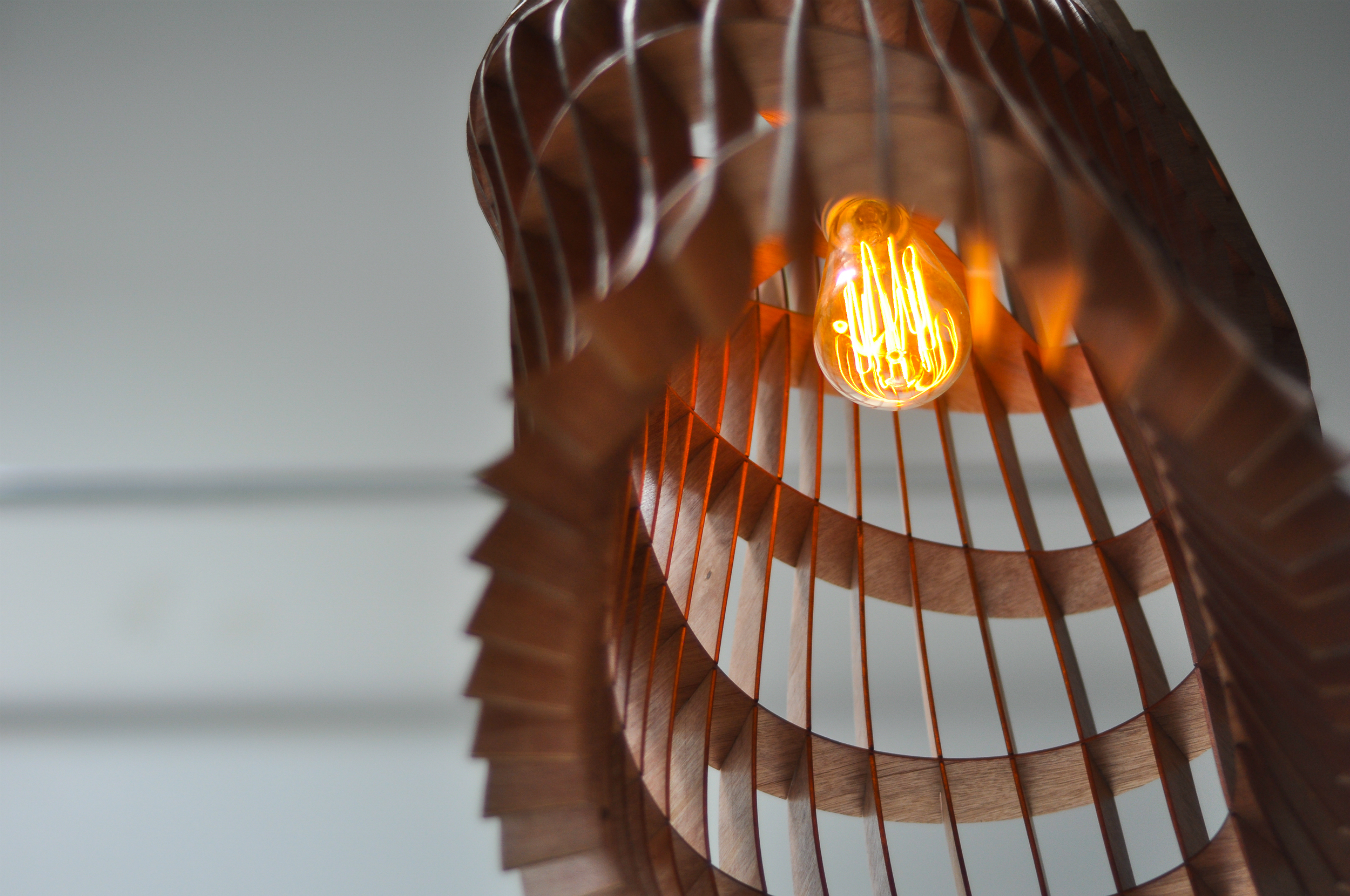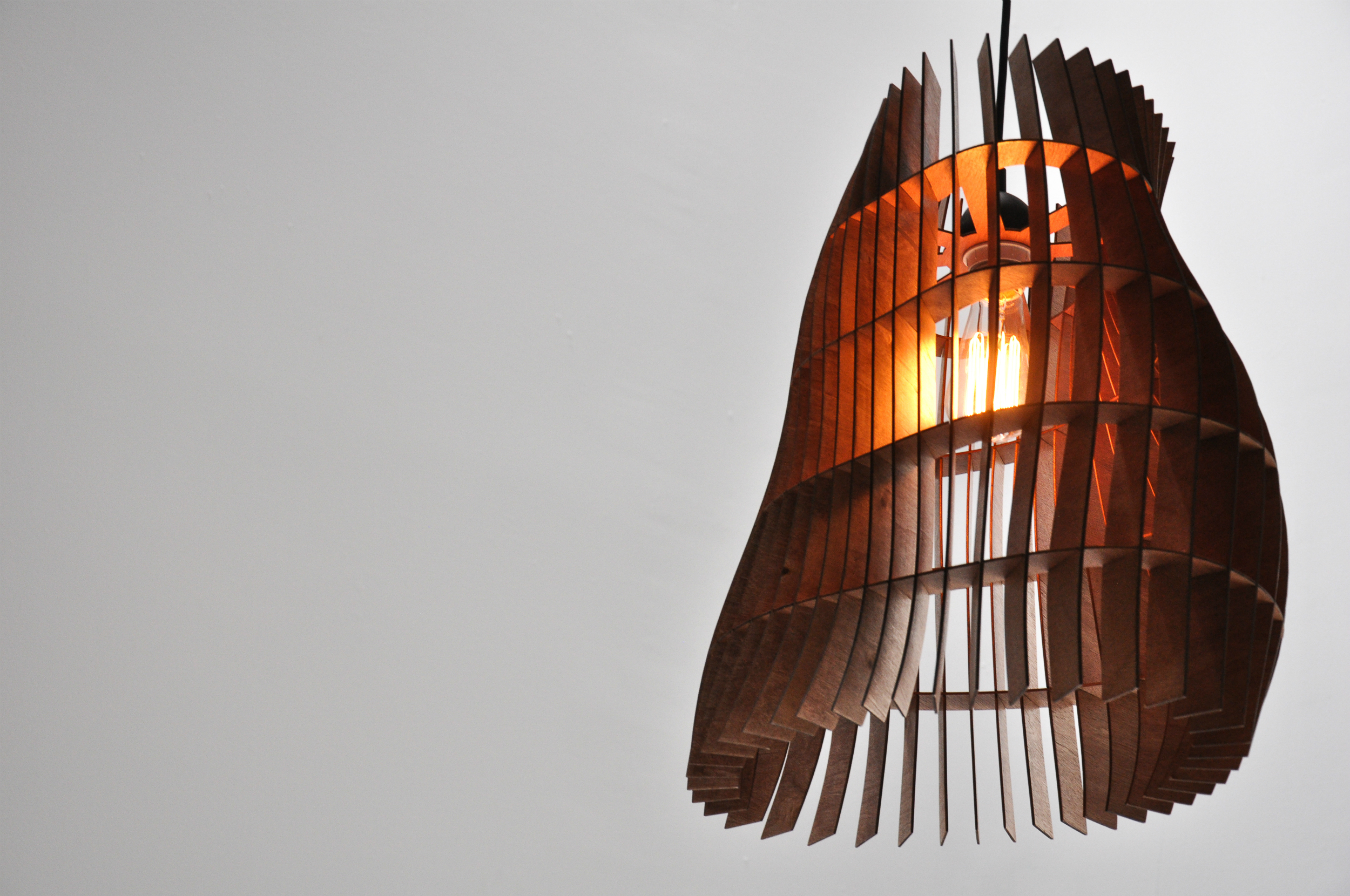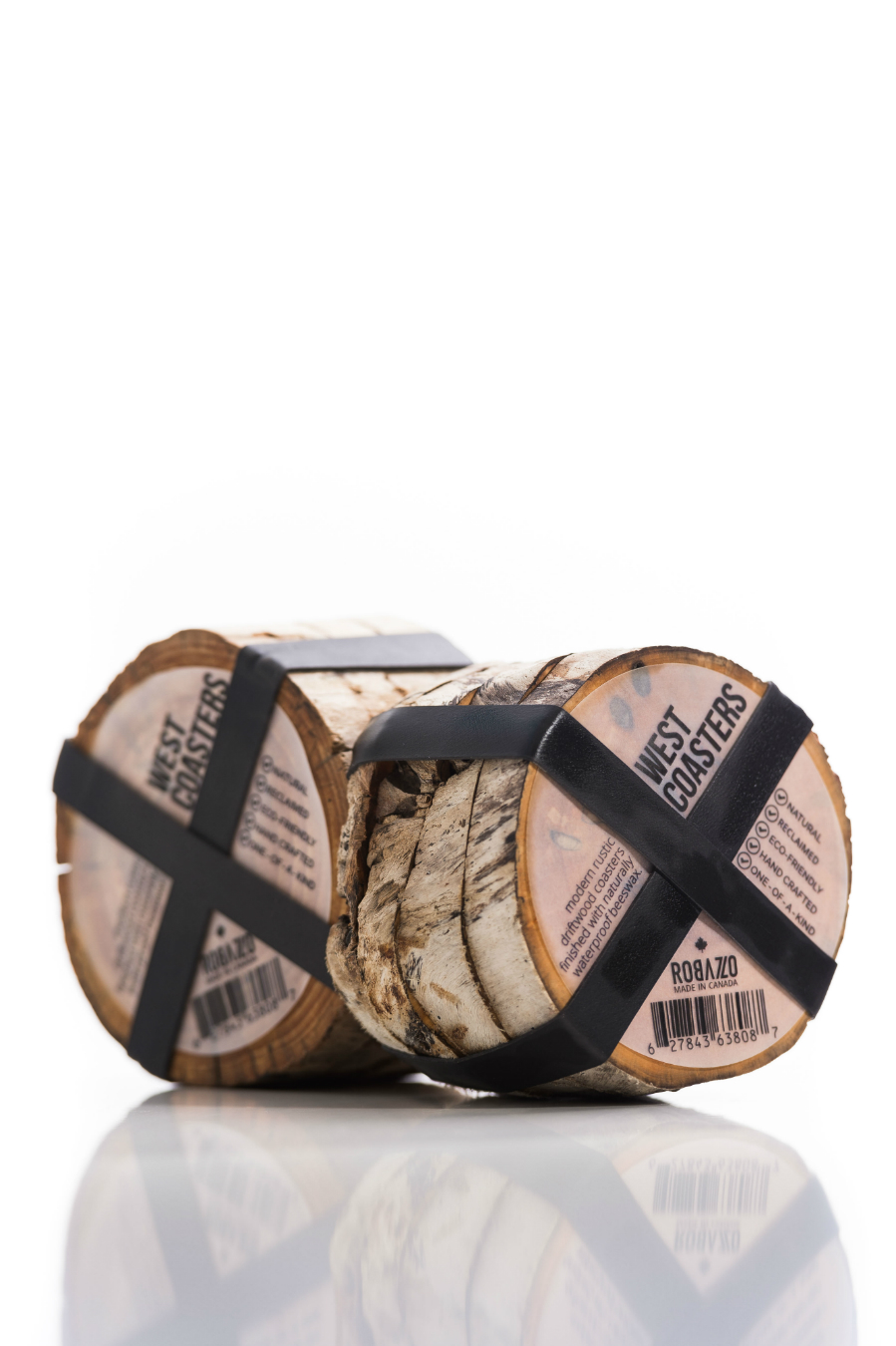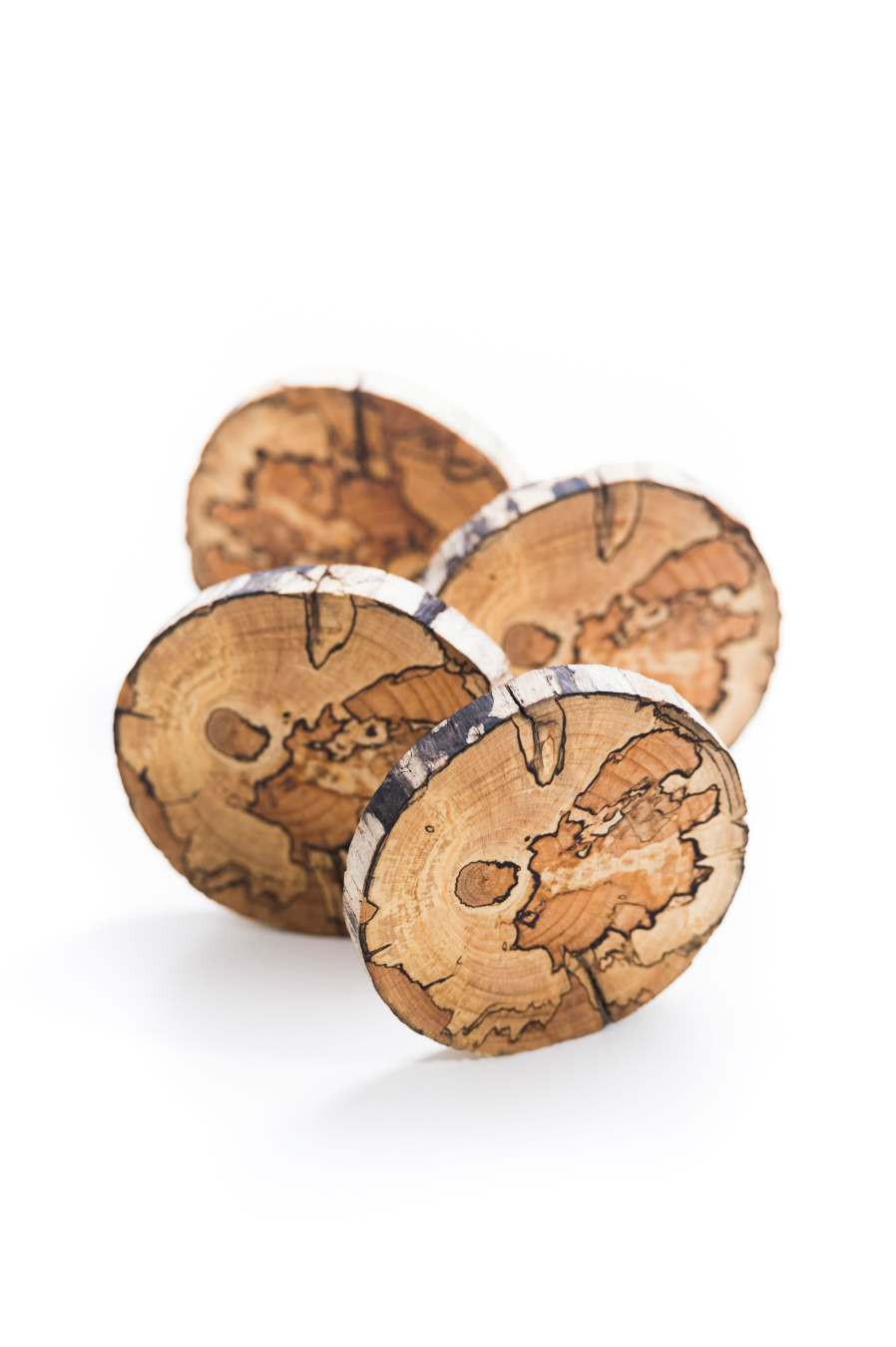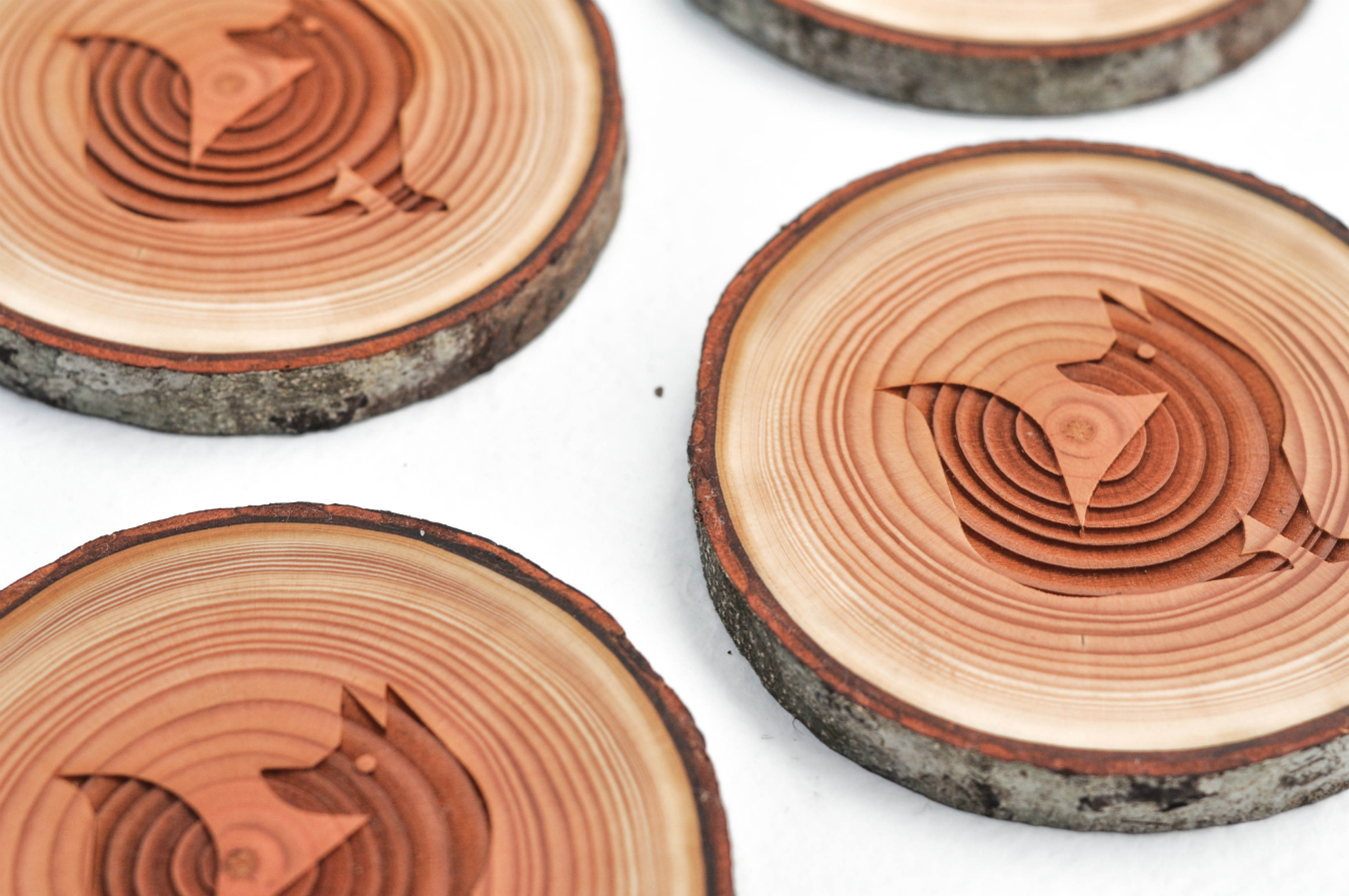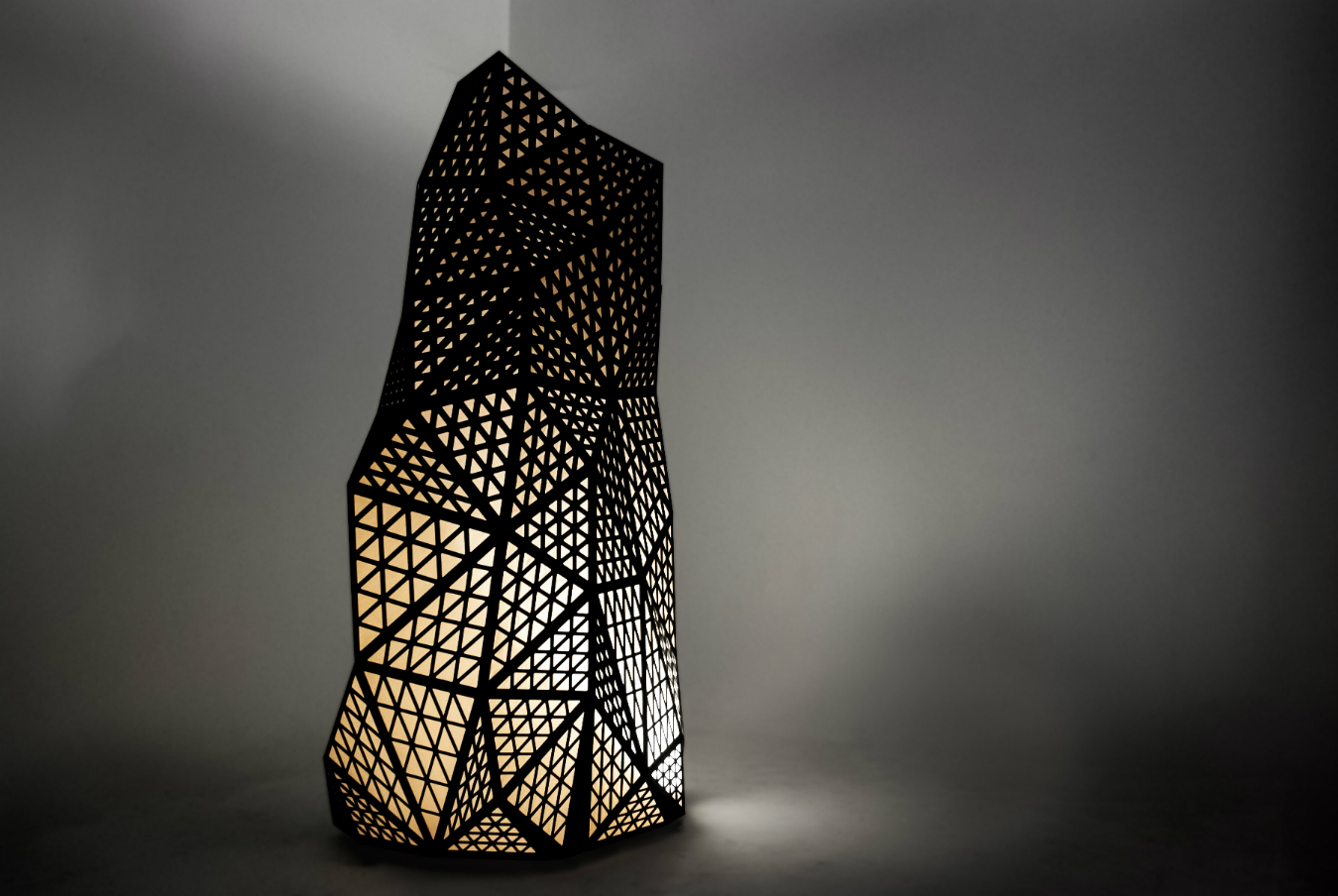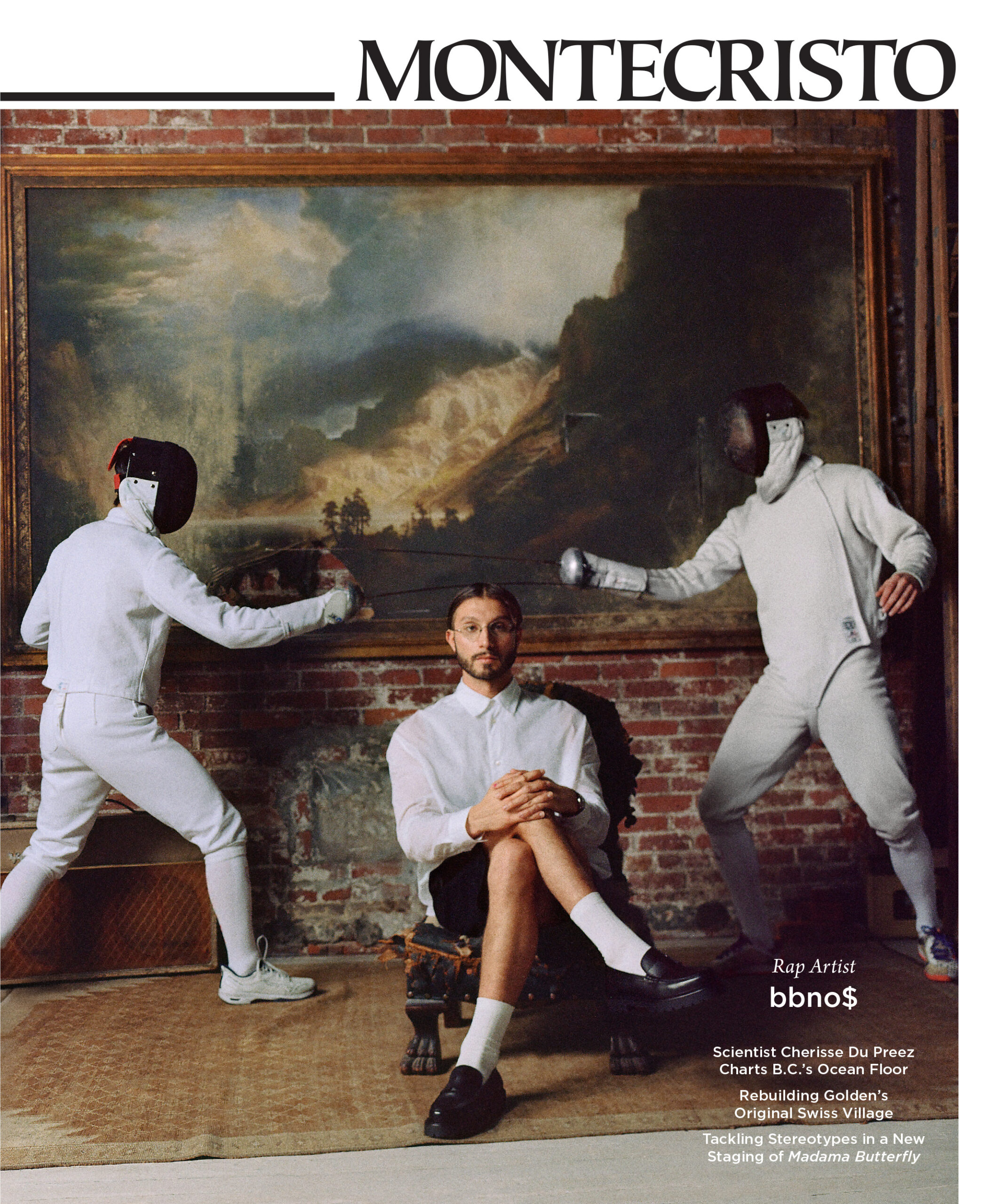“Helllll-oooo!” A friendly voice floats down the stairs from the loft of an unassuming office space on the edge of downtown Victoria. Studio Robazzo partner Andrew Azzopardi appears at the top of the staircase and casually click-clacks down to meet me in the middle, where we pause to admire the “White Void”: a shadow-less photography studio as tall as a giraffe. Today, it is home to an arresting geometric structure dubbed the StalagNight.
“This piece has led to some interesting developments,” Azzopardi says, his eyes bright and animated behind round glasses. The nine-foot-tall illuminated installation was inspired by stalagmites—mineral formations that rise from the floor of caves—and was originally created for a light festival in the growing Westhills neighbourhood, just outside of Victoria, and later revived for the opening of a Lululemon store.
Made out of hockey tape and laser-cut, black-painted plywood, the piece made quite the impression—so much so that Westhills recently commissioned Studio Robazzo to design the public space for its 500-acre master-planned community. The project—which will include cladding for parking structures, a wayfinding system, signage, and sculptures—will be the young eco-design studio’s biggest undertaking to date. It is also a testament to the buzz that it is creating on Vancouver Island and beyond.
“We’re going to give this new neighbourhood a cohesive, cool, innovative feel,” Azzopardi says of Westhills, as we climb the stairs. “A big part of a healthy environment is fostering ideas, creativity, and a sense of well-being. For us, that’s pinnacle in what we’re designing.”
When we arrive in the open, airy space, two young men are hunched behind computers editing video (they trade their services for studio space) while another 20-something works on Studio Robazzo’s popular West Coasters (beverage coasters made out of driftwood). The product is one of the first that the studio made in the beginning, when they were the ones looking for space in Victoria’s Inner Harbour in exchange for their services, and had to quickly come up with something to hawk. Azzopardi recalls taking the bus with a backpack loaded with driftwood to a shared workshop, toiling away all day, and then biking home because he could only afford the transit fare one way.
Partners Christina Robev and Sarah McFadzen come to greet me, and they laugh as they recall those days—just a few years ago—when they were crammed into an 85-square-foot space in the back of a furniture store. Today, the smell of burning wood from the laser cutter slices though air as the under-30 entrepreneurs proudly show me around their 3,000-square-foot “creative playground.” (“Everyone assumes I’m the intern,” Azzopardi laments in reference to his age, though he’s the eldest of the crew. “I’m like, ‘No, I’m the ‘Azzo’ [in ‘Robazzo’]!”)
We make our way to the “office,” one end of the open-plan space with chalkboard-lined walls and four desks, and Robev offers me a seat on the Lovesac, the foamy cousin of the beanbag chair. Hanging in a skylight above us is a hammock that can accommodate 10 people, made by Robev out of climbing rope. It’s used for brainstorming sessions and meetings with the more “eccentric” clients.
“We try to cultivate a super creative, fun environment,” Robev says. She gives me a quick rundown of what’s been keeping Studio Robazzo busy lately, from offering interior design clients virtual reality tours of their space, to creating trailblazing trade show booths sure to stop you in your tracks. “We always want to be doing something different,” she says. “We’re constantly working on different skills and projects. It’s just so much more interesting.”
“It also allows for new ideas to be bred,” interjects Azzopardi.
“Yeah, we’re constantly merging disciplines and having different ideas crash into each other,” Robev continues.
“To see what comes out of it,” Azzopardi adds.
“The diversity is both good for us and also good for the clients and the work that we’re producing,” Robev says. “We’re learning new skills all the time.”
“Get efficient at learning, and you can do anything,” Azzopardi concludes.
Most conversations go like this, with the partners riffing off of each other’s ideas in what seems like a single, seamless stream of consciousness. Confident, charming, and quirky, these millennials are being trusted with some of Victoria’s most public projects—from the TEDx Victoria stage to the Mayor’s Awards—and after speaking to them, it’s easy to see why.
In a scenario that epitomizes “meta,” when Studio Robazzo designed the 2016 Vancouver Island EcoStar Awards, they found themselves etching their own name onto one of the trophies. The awards were made from local wood, salvaged marble dust, and eco resin, and honoured champions of green initiatives. As McFadzen says, “It was very affirming to go from just being commissioned to make them, to being recognized enough to receive one.” Indeed, in a few short years, Studio Robazzo has made a mark on the city. “That’s the beauty of Victoria,” Robev says. “Here, it’s just so honest. It’s not taboo to be supportive of the new guys.” Especially when they have such good ideas.
Visit our Design section.
